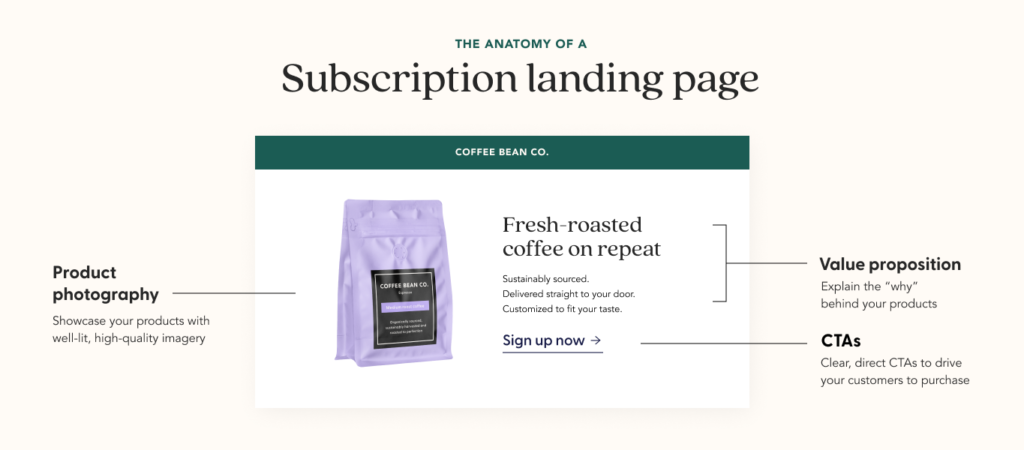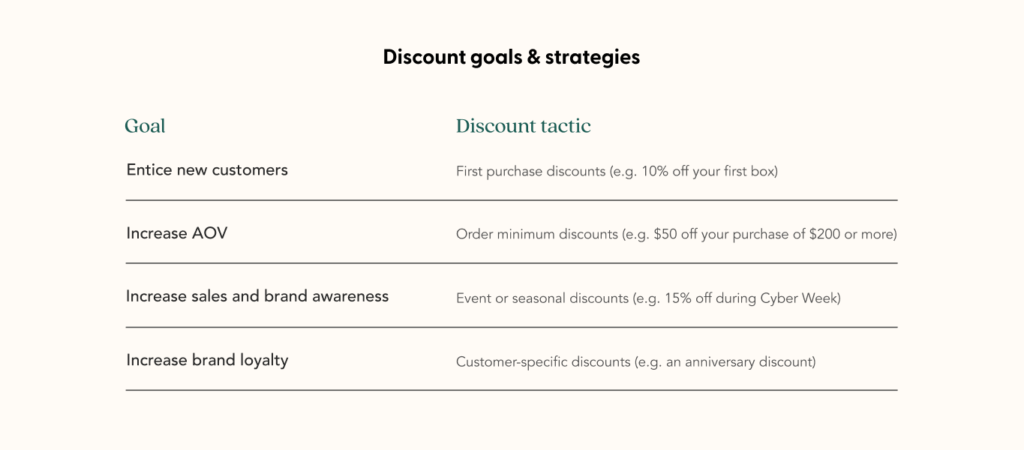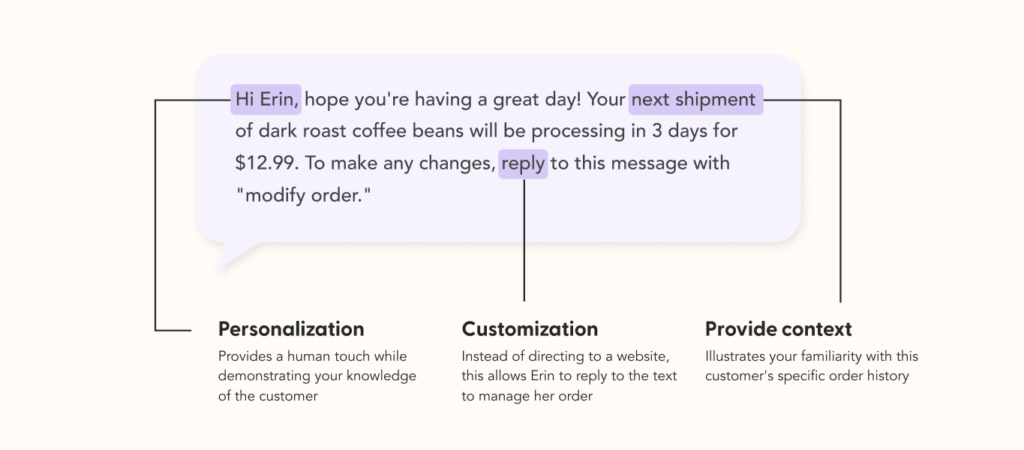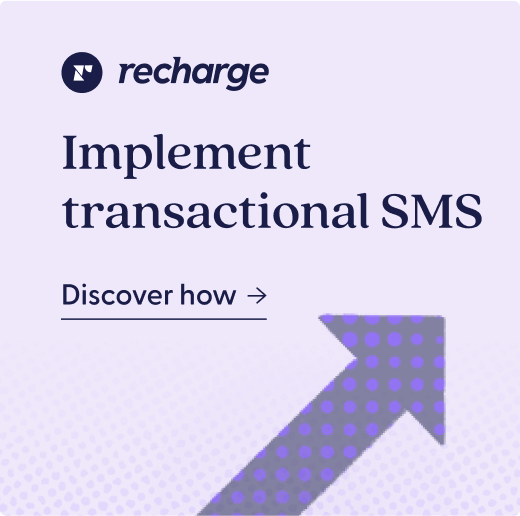Customer acquisition should be one of your very first focuses after launching subscription offerings on your ecommerce store. After all, to make your recurring offerings truly thrive—and grow and scale your business effectively—you need to attract a core group of returning customers who are committed to your brand.
But how exactly, in concrete terms, can you attract those customers to your business? And how can you do so while balancing the high customer acquisition cost (CAC) that often comes with the territory in the world of ecommerce?
In this post, we’ll discuss tactics you can use to build out your customer acquisition strategy with subscriptions in mind. For more tips and tricks on how to grow and scale your subscription business, download our free ebook, Succeed with Subscriptions.
Key takeaways
- A strategic approach to subscriber acquisition is important to build a best-in-class subscription business.
- It’s key not to lose sight of customer retention efforts as you build out your customer acquisition process.
- Always consider the costs of new customer acquisition in the context of other metrics, such as customer lifetime value and churn rate.
Five best-in-class customer acquisition strategies
In order to attract high-value customers, it’s important to approach subscriber acquisition from a variety of different angles. This will help you meet potential customers where they are so you can begin building connections, and eventually, long-term subscriber relationships.
1. Optimize your website for sales
One of the most important things you can do to acquire new customers is to optimize your website for recurring sales. Here, you’ll want to focus on creating shopping experiences that are easy, convenient, and intuitive so you can make a positive first impression and encourage users to stick around.
To set your website up for success with subscriptions, consider the following strategies:
- Optimize your website for mobile shopping. Consider elements like easy-to-click add-to-cart buttons, one-page checkouts, and enabling payments from mobile wallets.
- Make it easy to navigate and search your site. This not only includes your site navigation, but the presence of your search bar on any relevant page.
- Improve your site speed and page loading times. According to Google, 53% of site visits are abandoned if a mobile site takes longer than three seconds to load.
2. Launch a compelling subscription landing page
A subscription landing page is a dedicated page of your site that explains the value of your recurring offerings and how they work. Many consumers today still have misconceptions about subscriptions, and that hesitancy can prevent them from signing up. A subscription landing page provides a place for you to educate those shoppers about your products and services and set expectations for what’s to come.

When building out your subscription landing page, some best practices to keep in mind include:
- Consistently showcasing your brand’s unique value
- Clearly communicating your subscription timeline and benefits
- Leveraging social proof (like reviews) and user-generated content
- Providing strong calls-to-action (CTAs)
3. Offer both one-time & subscription purchase options
If customers have never tried your products or services before, they may be hesitant to commit to a subscription. To get their foot in the door and make them more likely to subscribe later on, consider offering both one-time and subscription purchase options—a strategy that can increase LTV by up to 230%.
Once you’ve converted a potential customer into a one-time purchaser, you can follow up with them through sales and marketing efforts to either purchase again or sign up for a subscription. To take things a step further, when you have both one-time and subscription purchase options for a product, you can emphasize the subscription option. This can be done by providing clear buttons at checkout to easily upgrade to the subscription option, or by placing the subscription option first, before the one-time purchase option, on a product detail page.
4. Create enticing discounts
Offering discounts is a popular strategy that helps businesses acquire customers. But when done effectively, it can also increase customer loyalty, encouraging subscribers to stay with your business.
As shown in the chart below, there are a variety of different discounting tactics you can experiment with for your business. You can also use discounting to achieve a variety of different goals beyond customer acquisition, including increasing average order value (AOV), boosting your sales and brand awareness, and strengthening your brand loyalty.

With any discounting, it’s key to track your efforts over time and analyze their impact on the health of your business—particularly your customer retention. Avoid over-incentivizing on the first purchase, which can increase your customer churn, and instead apply discounts strategically and with careful analysis to encourage signups.
5. Develop an acquisition-based marketing strategy
The work for attracting subscribers is never truly done—it’s an ongoing part of your business operations. With this in mind, one of your most important customer acquisition efforts is to develop an acquisition-based marketing strategy. This will help you gain qualified leads and raise awareness about your brand.
Focus on SEO
SEO, or search engine optimization, is a powerful customer acquisition tool. This strategy allows you to boost your ranking in search engine results, making it easier for qualified leads to find your brand and sign up for your products or services.
SEO best practices include:
- Identifying your brand’s valuable keywords and using them strategically throughout your site
- Investing in a company blog, where you can target those keywords while educating your customers about your products and services
- Using relevant links throughout your website
- Avoiding overcrowding your copy with the same keywords over and over (also known as keyword stuffing)
Prioritize your brand voice & the user experience
You don’t just want your content to rank highly on search engines—you also want it to be useful and engaging for the people who read it. Be sure to balance your SEO efforts with a focus on the user experience.
Elements of your site to focus on include:
- Headers, descriptions, and CTAs that are clear, on-brand, and easy to read
- Captivating and on-brand site imagery and product photography
- A strong “About” page that clearly shows your brand’s greater purpose
Hone your omnichannel marketing strategy
An omnichannel marketing strategy approaches customers from a variety of different channels. While the right outlets for your business all depend on your products, services, and customer base, start by considering the following customer acquisition channels:
- Email marketing—try targeted segmentation to reach specific groups of your customers more effectively
- Social media—be sure to customize your messaging to suit each individual platform
- SMS—strike the right balance between promotional and transactional SMS to engage with your audience in valuable ways

Set your subscriptions up for success
Building a sustainable customer acquisition strategy that your business can maintain over time is an investment in your future success. But of course, there are other important steps to take to get the most out of recurring revenue for your business—regardless of your platform.
For more in-depth information on subscriber acquisition, as well as step-by-step instructions on how to increase your subscription sales, improve the customer experience, and tackle churn, download our free ebook, Succeed with Subscriptions.



